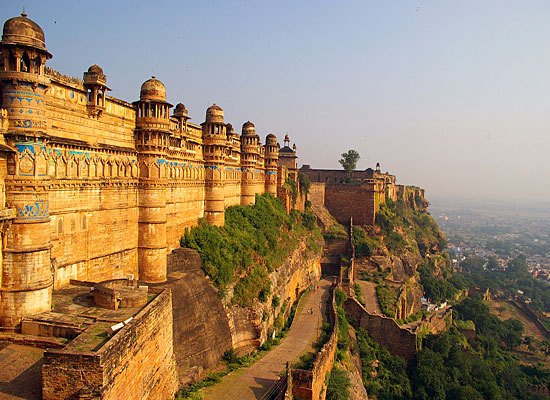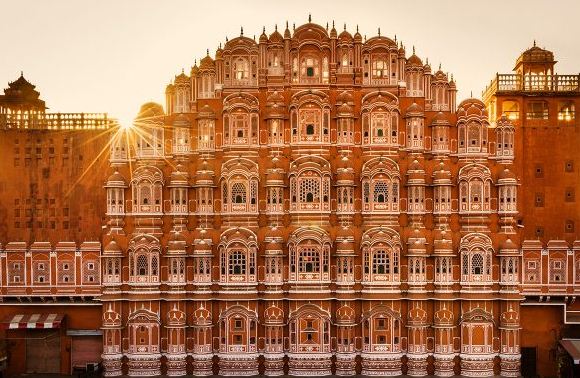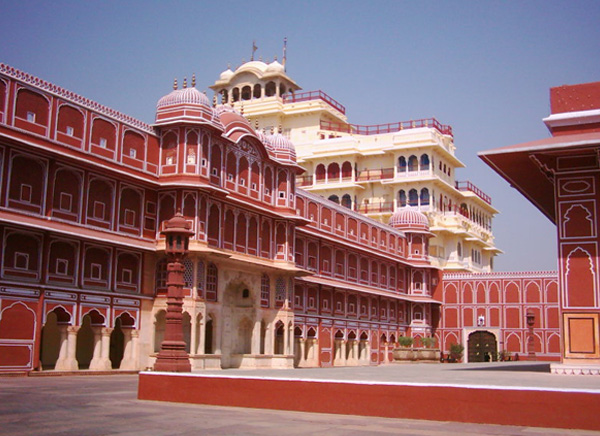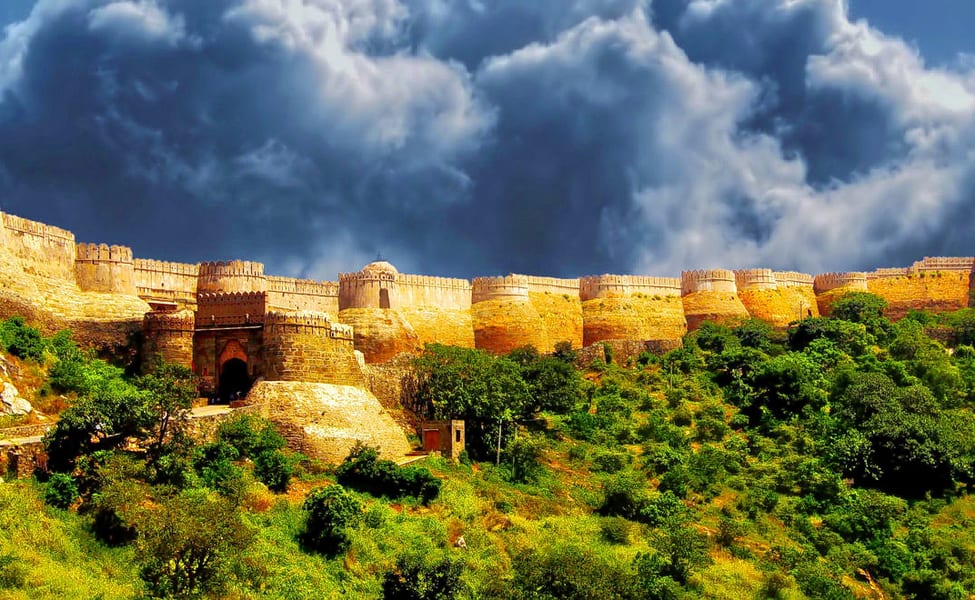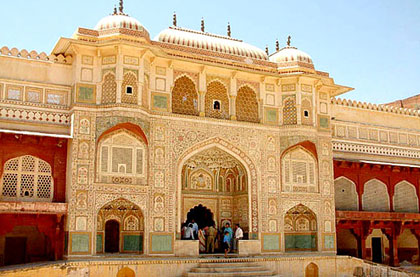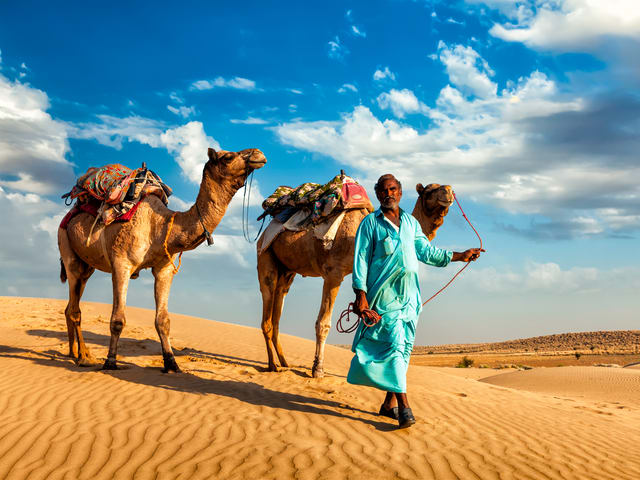Rajasthan Forts and Palaces Tour
Destination :
Delhi – Sikandra – Agra – Fatehpur Sikri – Jaipur – Ajmer – Pushkar – Chittourgarh – Udaipur – Ranakpur – Jodhpur – Manwar – Jaisalmer – Pokhran – Bikaner – Mandawa – Delhi
Highlights:
- As this travel plan is customized one for a private visit, we can adjust the visit and administrations according to your prerequisite.
- A particular necessity, extraordinary intrigue visit, gatherings, course, shopping, national occasions, reasonable and celebrations, meeting with neighborhood individuals, safaris, outing, and dinner plan, convenience and so forth., can be masterminded as needs be at extra expense, assuming any.
- During the National Ceremonies, Major Sports Events, New Year, Christmas, Fair and Festivals the bundle cost can be changed occasionally.
Rajasthan Forts and Palaces Tour
The splendid form of these architectural wonders is certainly enriched with magnificent history and dramatic past. Marbles, stained glass, gold, and silver are intensively used with metalwork artifacts. They all create a delightful and incredible beauty to hold these palaces! With a tour of the forts and palaces of Rajasthan, you will have a remarkable experience of your lifetime!
1
Day 1: Arrival - Delhi
Welcome on arrival at Indira Gandhi International Airport in Delhi and transfer to pre-booked hotel by air-conditioned car. After check-in, travel documents related to travel planning and services will be handed over to you; Our representative will address all your questions regarding your entire tour plan. Later in the evening, he went to see the Light and Sound Show at the Red Fort. The show showcases an amazing history of the city in a very interesting way. Come back to the hotel and relax.
Light and Sound Show: Enjoy a spectacular show at the Red Fort. Which gives the city's 5,000-year-old history alive. Amidst the harmonious panoramic and historical atmosphere of the Red Fort, select episodes of the history of Delhi's historical and majestic past are vividly brought to life. Special effects combine with exceptional character to make the show an impressively memorable experience.
2
Day 2 : Delhi
After having your morning breakfast, take a sightseeing tour of Old Delhi such as: Red Fort, Jama Masjid "India's largest and most magnificent mosque", Rajghat "Memorial of Mahatma Gandhi" where he was cremated. Sightseeing tour continues to visit New Delhi including Rashtrapati Bhavan, India Gate; To honor and pay tribute to the Indian soldiers who sacrificed themselves during the Afghan war, Birla Mandir (Lakshmi Narayan Temple), Humayun's Tomb, Lotus Shaped Bhai's Temple, Qutub Minar; Produced by Qutub-ud-Din Aibak of the Slave Dynasty. Sri Radha Parthasarathy Temple, commonly known as ISKCON Delhi Temple. In the evening you can opt for a cycle rickshaw ride from the vibrant and colorful market of Chandni Chowk. Later, go back to the hotel to rest and relieve your tiredness.
3
Day 3 : Delhi – Sikandra – Agra (210 kms: 5 hrs)
Get out of the hotel after breakfast and drive to Agra, after stopping to see the Mughal Emperor Akbar's mausoleum at Sikandra, the journey continues at the hotel on his journey to Agra. In the evening, if time allows, one should visit the Oswal Emporium, which is 10 years old to see a replica of the famous Taj Mahal, this artistic symbol, the light and sound show "Mohabbat-e-Taj," Saga Began Enjoy Love ”, the only show of its kind in India! Later stayed overnight in the hotel.
The Taj Mahal of Agra is famous as one of the seven wonders of the world - the Taj Mahal. A pleasant city of the comparatively slow pace, Agra is an old city and is called Jungle, which originates from a forest described in the Mahabharata. Agra is known for its magnificent work on marble and soapstone, which are descendants of those who worked under the Mughals. In Agra, carpets, gold thread embroidery, and leather shoes are made for which it is famous in the world. Both Agra and Fatehpur Sikri are located near Delhi. Agra Fort, Sikandra, Ram Bagh, and Itmad-ud-Daula are some notable places besides the famous Taj Mahal.
4
Day 4 : Agra
The world's most popular and beautiful monument in the morning: its spectacular view at the Sunrise Taj Mahal. Taj Mahal is a wonderful and beautiful architectural monument which is one of the 7 wonders of the world. This historical work depicts the fusion of diverse architectural styles. The Taj Mahal is the crown of all the lovely buildings in the world and a symbol of eternal love. After this, you will proceed towards the fort of Agra. The fort was built in 1576 AD by the great Mughal emperor Akbar, which was structured and designed with red-stone barricades. Here you will find magnificent Pearl Mosque and other excellent examples of art: Jahangir Mahal, Moti Masjid, Machhi Bhawan, Nagina Mosque, Diwan-e-Khaas, Sheesh Mahal, Diwan-i-Aam and Meena Bazaar and Mussman Bhurj. Emperor Shah Jahan imprisoned his rebellious son Aurangzeb at Musaman Bhurj, he would show his love through the Taj Mahal, where his beloved wife was cremated. Later, visit Itmad-ud-Daula's tomb, 35 km from Agra, as a memorial to his great father. Later returned to the hotel overnight.
5
Day 5 : Agra – Fatehpur Sikri – Jaipur (240 kms: 5 - 6 hrs)
After breakfast this morning, walk to the Hotel and Jaipur. En-route stopover in the old deserted city of Fatehpur Sikri of the Mughal Empire, made of red sandstone in honor of Salim Chishti, who gave birth to 3 sons to Emperor Akbar. This is an example of strong stability combined with originality. Each important structure here represents a type in itself. One of them is Diwan-i-Khas; Panch Mahal, the tomb of Salim Chishti and Buland Darwaza, is one of the largest and largest gateways in the world. Also, a halt at Abhaneri near Jaipur, and a visit to Charan Vel, it was built by King Chanda of the Chauhan dynasty, and on completion was dedicated to Hashat Mata, the god of joy and happiness. Later, continue the drive to Jaipur. On arrival, transfer to hotel for overnight stay.
The walls, houses, and buildings of the entire city were washed with pink in 1853 AD for the grand and royal reception of Britain's Prince Albert and Queen Victoria. I visited Jaipur. This magnificent city was founded in 1727 AD. The greatest ruler was in Jai Singh II. Jaipur is surrounded by hills on three sides. Jaipur is the only city in the world, built according to Hindu architectural science called Shilpa Shastra. The city was designed in a rectangular shape of 9 blocks, depicting 9 divisions of the universe.
6
Day 6: Jaipur
After breakfast this morning, take a tour of the Pink City to have a spectacular view of the Amber Fort located outside the city, built in the 15th century by Rajput Raja Man Singh. Later visit another powerful and majestic Nagargarh Fort close to Amber Fort. Drive back to the main city to visit the Imperial City Palace - the current residence of the royal family of Jaipur. The incredible Jantar Mantar was built and built by Raja Raja Jai Jai Singh. The magnificent Hawa Mahal is also known as the 'The Palace of Winds' Birla Mandir with its white shimmering marble glow at night. You can visit the fort of Amber to watch a light and sound show: one holds the history of the citadel, which is pulsed with 600 years of the Kachhwaha dynasty and an old past of 28 kings, before their capital moved to Jaipur Has gone. Later you can stop on a cycle rickshaw ride and explore the bustling market. Enjoy your evening at the most authentic and ethnic village resort: Chokhi Dhani, which is built on the theme of an ethnic village in Rajasthan with lots of entertainment like folk dances, puppet shows, astrology, music, camel rides. All are traditional environments. Enjoy traditional Rajasthani food. Later, return to the hotel for the overnight.
7
Day 7: Jaipur – Ajmer – Pushkar (135 kms: 3 hrs)
Get out of the hotel after breakfast and visit Pushkar at Khwaja Saheb's dargah. It is the most important temple in India for Muslims and thousands of devotees of all religions visit the holy place through the year. On arrival at the hotel, after visiting Pushkar. Pushkar is known for the biggest cattle fair in the month of November every year with a spectacular celebration. Visit the city to visit the temple of Lord Brahma surrounded by Pushkar Lake. The devotees took a dip in the holy water and prayed on the banks of the lake. Also visit the Pushkar Mela site, which is right in front of the Pushkar Lake. The evening is free to relax or take a stroll to see the beautiful Pushkar Lake and the colorful market of Pushkar. Overnight at the hotel.
Ajmer, founded in 1100 AD by Aizpal Chauhan, Ajmer derives its name from the invincible hill called 'Ajaya Meru', on whose banks the present city stands. Ajmer owes its overall culture to the reign of many dynasties, leaving behind the indelible mark of its culture and traditions. Ajmer is located 131kms west of Jaipur in a valley surrounded by the Aravalli hills. One Dargah Khwaja Sahib is one of the holiest Muslim pilgrimage centers in the country. The city has some magnificent works of Indo-Islamic architecture.
Pushkar: According to the Hindu scripture Padma Purana, the demon Vajranabha was seen by Bhagavan Brahma ji while trying to kill his children and harass people and he immediately killed that demon with his weapon and lotus-flower.In this process, the lotus petals fall to the ground in three places, forming three lakes: Pushkar Lake or Jyeshtha Pushkar (largest or first Pushkar), Madya Pushkar (middle Pushkar) lake, and Kanishat Pushkar (lowest or lowest) Age of Pushkar) lake.
8
Day 8: Pushkar – Chittourgarh – Udaipur (280 kms: 6 hrs)
After breakfast visits the hotel and Udaipur, visit the city of Chittorgarh, visit the most powerful and largest historical fort in India: Chittorgarh, this Taj Mahal fort reminds you of the bravery and bravery of the Rajput clan of Rajasthan, from 700 Is more spread. There are historical monuments in Acre, Area, Fort: Tower of Victory, Rani Padmini Palace, Man Mahal, Meera Temple and many ruins of Shiva. Chittorgarh is unique to the Rajput tradition and echoes with stories of romance. Later, continue the drive to come to Udaipur, check into the hotel. In the evening enjoy a boat ride in Lake Pichola; You can choose your own dinner at the Lake Palace Hotel, located in the middle of the lake. Come back to the hotel and relax.
Chittorgarh, the city known for its huge fort, Chittorgarh, which is situated on a 6kms long hill, covers an area of 280 hectares with fortifications, temples, towers, and palaces. The city may be singled out for its illustrious past and valor, unique to the Rajput tradition. Chittorgarh is a Garhwali settlement, which has a history of many sieges but refused to bow down to foreign invaders. Tales of Princess Padmini are known here for her elegance and beauty. A ruins bastion, where the royal past resides in its grand forts and palaces
Udaipur: One of the most romantic and beautiful cities of North India, the city was founded by Rajput king Uday Singh in 1568 AD. Situated on the banks of the shimmering Pichola Lake, it is one of the most romantic cities in Rajasthan. Udaipur is situated in the lush green Aravalli mountain range. It is a kaleidoscope of amazing lakes, enchanting temples, lakes gardens, amazing forts and palaces and the narrow lanes of the old city with a historical past that describes the poise and valor of Udaipur, the Rajput king who spent years and years on this city. Was ruled by valor and chivalry.
9
Day 9: Udaipur
After breakfast, take a sightseeing tour of Udaipur visiting one of the important landmarks of the city - the Miracle City Palace complex. The palace is a magnificent white marble historical house of Rajput rulers. Here you will find notable places like Durbar Hall, Palace Museum, Crystal Gallery and Jagdish Temple, followed by Saheli ki Bari, a beautiful amusement garden for queens and the temple of rulers. The Indian Folk Arts Board is an ethnic display of Rajasthan's traditions and culture, ethnic ornaments are traditional outfits, puppets, masks, dolls, classical paintings, guna musical instruments. For a sightseeing tour of the ancient Eklingji and Nagda temples, visit the 22 km lake to Begela Lake in the evening. Overnight in the hotel.
10
Day 10: Udaipur – Ranakpur – Jodhpur (257 kms: 5 hrs)
After breakfast, get out of the hotel and take a walk to Jodhpur, take a route to Ranakpur, visit the ancient Jain temples built in the 12th century, you can choose to enjoy lunch at Queen's Daughter: (You're On the dam) an authentic heritage hotel. Later, on reaching the hotel, reach Jodhpur. After refreshment, if the time to visit Bishnoi village is 25 km: 45 minutes one way. Villagers hailing from the Bishnoi caste are considered as guardians of animals. Bishnois are vegetarians and therefore have great reverence for all living things. Then to see the local handicrafts i.e. shoe makers, pottery men in their traditional costumes, women with ancestral silver jewelry, en-route clock, and pictures of beautiful wildlife - blackbuck, chinkara, peacock, etc. Go, who is walking generously. Care by local villagers. After the drive to Jodhpur, you can explore the local market by visiting various authentic restaurants. You can choose an open-air restaurant with Rajasthani hospitality offering authentic food and folk music and dance. Come back to the hotel and relax.
Jodhpur: Rajput house, (Rathore) - Terrible city of Rajasthan. 1459 AD by Rao Jodha. Established in today, Jodhpur is one of the largest and prosperous cities of Rajasthan, known as the white city of Rajasthan. Jodhpur was once the capital of the Marwar state (northern part of Rajasthan). The old Taj Mahal, the fort of Mehrangarh, is a major tourist attraction of Jodhpur. Another pride of Jodhpur is Umaid Bhawan Palace; This grand palace has now been converted into a heritage hotel and the current residence of the royal family of Jodhpur.
11
Day 11: Jodhpur – Manvar (110 kms: 3 hrs)
After breakfast, check out the hotel and go on a sightseeing tour of the city which is the Clock Tower, the towering Mehrangarh Fort, the magnificent Jaswant Thada (Tomb of the great Rajput king: Jaswant Singh), Umaid Bhawan Palace and Museum - one of India. The grandest and regal palace, built by Maharaja Umaid Singh, was designed by the famous architects Edwardian and Henry von Lanchester, who built this wonderful palace, which is a fine example of Indo-Saracenic architecture. A part of the palace has been converted into a hotel, a part of the museum and the remaining part is still in the possession of the royal family. After a visit to Manavar in Devaru. This place falls under the Shergarh region of the Thar Desert and the region has the highest sand dunes. On arrival at the resort. Early evening transfer on camels for a desert safari to Manavar campsite, reaching the campsite by sunset. In the evening, enjoy folk dances and music under the starlight sky, enjoying a theme dinner. Dinner and dinner at the desert resort.
Manwar is an unprecedented tourist destination located in the center of the great Indian Thar Desert which offers a rare opportunity to enjoy the desert life, culture, wildlife and beauty of Rajasthan. The Manwar Resort is spread over 5 acres. Built using local materials and techniques, the resort has 21 well-designed stone cottages with vaulted ceilings, tile-roofed eateries, open-air courtyards, book, and gift shops, reading rooms and a swimming pool. There is a pool. The interiors are designed to be clean and comfortable spaces. Smooth plaster combines plaster, patterned mosaic flooring, clay colors with a woven headboard and customized elements such as bedside lamps, furniture, and rugs - all of which are very specific to the desert region of Marwar.
12
Day 12: Manvar – Jaisalmer (170 kms: 4 hrs)
In the morning you can opt for a jeep safari to explore your lifestyle, villagers craftsman, carpenter, metal smith potter, cobblers to explore around the desert village. Villages return to the resort after the safari to visit and drive to Jaisalmer. On arrival transfer to hotel. After refreshments, you can visit Amar Sagar and Mool Sagar Lake and the temples of Ladwara. Also, take a walk with the local market to improve the ambiance of the city. Overnight at the hotel.
Jaisalmer; The desert city is situated on the edge of the Thar Desert and is one of the most prominent tourist destinations in Rajasthan. Also known as the golden city, Jaisalmer is quite popular for the crowning of the Golden Fort. The city is a fantasy of yellow sandstone established in 1156 AD by Rawla Jaisal, a Rajput king. Jaisalmer is known for its golden-drawn sand dunes, magnificent havelis, thrilling Sam Dunes, Jain temples, picturesque Gadisar Lake and of course, royal heritage and culture. A tour of Rajasthan is incomplete without visiting Jaisalmer
13
Day 13: Jaisalmer
Today a city tour of Jaisalmer city after breakfast, the most popular Golden Fort, also known as Sonar Fort and Jaisalmer Fort, the fort is built on the top of the Trikuta hill, which has 99 strongholds, the most speculative feature being the Megh Darbar, and more There are many near the fort, the temples have amazing havelis made by the rich merchants of the past, especially Nathmal ji's Havel, Patwans' Haveli, Salim Singh's Haveli, Jagged There are splendid mansions with stone and magnificent carvings, which are really facing intricacy. . Later, visit one of the beautiful lake known as 'Gadisar Lake', the entrance of the lake is quite artistic and behind this lake is the story of the previous day. If time allows and you want to cover more places, you can visit the temples of Amar Sagar and Mool Sagar Lake and Ladwara. The Sham Sand Drive at Sam Sand Dunes, the closest location to the Sham Thunder Desert, appears to have golden sprawling sand as the gateway to the Thar Desert. Enjoy a camel ride on the sand dunes. Come back to the hotel and relax.
14
Day 14: Jaisalmer – Pokhran – Bikaner (330 kms: 7 - 8 hrs)
After breakfast drive to the hotel and to Bikaner, take a stop at Pokhran on the way: Visit the huge fort of Pokhran. Pokhran city came into the limelight when India's first nuclear test was conducted here in 1970. Pokhran Fort was built in 1532–1584 from yellow sandstone, although it was not typical like some other forts in Rajasthan, it has some magnificent palaces such as Mangal Niwas, Rani Mahal, and Phool Niwas or Phool Mahal; The tour of the Pokhran Museum is quite small inside the fort complex and includes weapons, pottery paintings and costumes worn by the Maharajas. Later continue to Bikaner drive to the hotel. Free for evening rest. Overnight at a hotel in Bikaner.
Bikaner: The city was founded by Rao Bikaji in 1488; Rao Bikaji was the son of King Jodhaji of Jodhpur, due to some personal confrontation with his family, he dared to build his city by adopting desert and wastelands and then he turned into a charming city called Bikaner, and the city was King Bikaji. in the name of. A 500-year-old city standing with a glorious past is located in the northern part of Rajasthan. The Rajput rulers here built magnificent palaces, temples, and forts which echoed the grandeur and images of monsoon clouds in this desert. The city is barred by 7 km long walls built in the 18th sanctuary with 5 huge gates around the city.
15
Day 15: Bikaner – Mandawa (190 kms: 5 hrs)
Today after breakfast visit the city of Bikaner, visiting the most popular and magnificent Junagadh fort built by Raja Rai Singh, it was never won during the entire history of Bikaner. There are about 37 magnificent palaces within the fort complex, 7 kilometers around the fort and 37 bastions and 2 huge gates. Later drive to the hotel and Mandawa, enter Deshnok, which is known for the Rat Temple in the world, this temple is 600 years old, dedicated to Goddess Karni Mata, the temple is built by King Ganga Singh of Bikaner, The temple is decorated with carved silver cages and marble stones. To check for later arrival at a heritage hotel, continue the drive to the medieval city of Mandawa, Rajasthan. Mandawa is also known as the 'open-air art gallery' of Rajasthan. In the evening you can roam the narrow streets of the local city, see the locals and shops. Later, enjoy traditional music and dance, live performances by the local artists during gala dinner. Overnight at the hotel.
Mandawa: The city was founded in the mid-18th century, located in the Shekhawati region in Rajasthan. Mandawa is known for its' speculative havelis and fortresses. Nowadays, Mandawa is known as a grand mirage-like Fort which is a popular heritage hotel with modern amenities. The structure of this place recalls one of the culture and traditions that this place used to have in the Golden Age. Thriving and prominent traders and traders built huge havelis with beautiful wall paintings for the purpose of their accommodation. In the past, the painting theme dominated the themes of mythology, animals, dancers, religion, paintings, displaying local legends, hunting and wrestling scenes, and more.
16
Day 16: Mandawa – Delhi (230 kms: 5 hrs) – Hometown
After breakfast visits the city of Mandawa, visiting specially known havelis: Binsidhar Chokhani, Nayatiya, and Gulab Rai Ladia Haveli. Binsidhar Newatia Haveli is famous for its curious paintings. Gulab Rai Ladia Haveli is known for its erotic paintings and images, which are now mostly spoiled. These havelis are like museums, many havelis built by the rich merchants of olden times. Later check out of the hotel and drive to Delhi, arrival at the airport to board the flight scheduled for the onward journey, the journey on departure ends with pleasant memories.
| INCLUDED |
|
||||||||||
| NOT INCLUDED |
|

